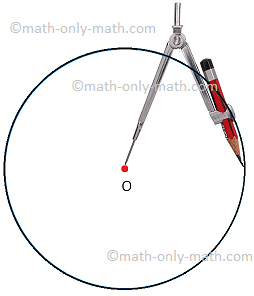Examples on Digits and Numbers
We will learn how to solve different types of examples on digits and numbers.
1. The sum of a 2-digit number & the number formed by interchanging the digits of the original (2-digit number) number is divisible by
(a) 11
(b) 9
(c) 5
(d) 3
Solution:
(10a + b) + (10b + a) = 11(a + b)
Therefore, 11(a + b) must be divisible by 11.
Answer: (a)
Note: Any two-digit number and the number obtained by
interchanging its digit:
⟹ Their sum is divisible by 11.
⟹ Their difference is divisible by 9.
2. The product of two positive integers is 24. The greatest number is 1 ½ times the smaller number. The difference of the numbers is
(a) 6
(b) 4
(c) 2
(d) 1
Solution:
Ratio of greater to smaller number = 3/2 = 3 : 2
Therefore, 3x × 2x = 24
or, 6x\(^{2}\) = 24
or, x\(^{2}\) 4
or, x = 2
Therefore, the required difference = (3x - 2x) = 2
Answer: (c)
3. Find the sum of all 4-digit numbers which are formed by the digits 1, 2, 3 and 4 only once?
(a) 66666
(b) 66662
(c) 66661
(d) 66660
Solution:
The required sum = 6666 × (1 + 2 + 3 + 4) = 66660
Answer: (d)
Note: Sum of all four digit numbers by using four difference digits (other than zero) = 6666 × Sum of digits
4. The number of digits in (125\(^{10}\) × 8\(^{9}\)) is:
(a) 19
(b) 28
(c) 29
(d) 30
Solution:
(125\(^{10}\) × 8\(^{9}\))
= 125(125 × 8)\(^{9}\)
= 125 × (1000)\(^{9}\)
= 125 × (10^3)\(^{9}\)
= 125 × (10)\(^{27}\)
Therefore, the required number of digits = 3 + 27 = 30
Answer: (d)
5. There are three consecutive positive integers. The difference of the squares of the extreme integers is 88. What is the average of three integers?
(a) 11
(b) 22
(c) 44
(d) None of these
Solution:
Of three consecutive positive integers, the difference of squares of two extreme integers = 88
Therefore, the average of three numbers = 88 ÷ 4 = 22
Answer: (b)
Note: If a, b and c are three consecutive integers, then average of the three numbers b =(c\(^{2}\) - a\(^{2}\)) ÷ 4.
Math Employment Test Samples
From Examples on Digits and Numbers to HOME PAGE
Didn't find what you were looking for? Or want to know more information about Math Only Math. Use this Google Search to find what you need.
Recent Articles
-
Dividing 3-Digit by 1-Digit Number | Long Division |Worksheet Answer
Apr 24, 24 03:46 PM
Dividing 3-Digit by 1-Digit Numbers are discussed here step-by-step. How to divide 3-digit numbers by single-digit numbers? Let us follow the examples to learn to divide 3-digit number by one-digit nu… -
Symmetrical Shapes | One, Two, Three, Four & Many-line Symmetry
Apr 24, 24 03:45 PM
Symmetrical shapes are discussed here in this topic. Any object or shape which can be cut in two equal halves in such a way that both the parts are exactly the same is called symmetrical. The line whi… -
Mental Math on Geometrical Shapes | Geometry Worksheets| Answer
Apr 24, 24 03:35 PM
In mental math on geometrical shapes we will solve different type of problems on simple closed curves, polygons, basic geometrical concepts, perpendicular lines, parallel lines, circle, terms relates… -
Circle Math | Terms Related to the Circle | Symbol of Circle O | Math
Apr 24, 24 02:57 PM
In circle math the terms related to the circle are discussed here. A circle is such a closed curve whose every point is equidistant from a fixed point called its centre. The symbol of circle is O. We… -
Fundamental Geometrical Concepts | Point | Line | Properties of Lines
Apr 24, 24 12:38 PM
The fundamental geometrical concepts depend on three basic concepts — point, line and plane. The terms cannot be precisely defined. However, the meanings of these terms are explained through examples.




